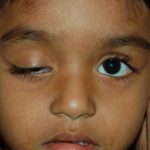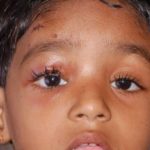What is the exact cause of my ptosis?
The exact cause in children is not known. Children may develop Ptosis if the muscles in their upper eyelids do not develop properly before birth. In older people, the skin, tissue and muscles may loosen as the body ages. Eye injury can also cause ptosis at any age.
What is the treatment for ptosis?
For most cases, surgery is the only option.
Is surgery urgently required?
In small children: If the central black part of the eye (the pupil) is covered by the eyelid, surgery should be done as soon as possible. This is to avoid the risk of lazy eye.
In other patients: Surgery is less urgent. If you also have a cataract, then the ptosis surgery will be done after the cataract surgery.
Will the operated lid perfectly match the other eyelid after surgery?
The operated eyelid will more or less match the other lid in appearance. It may not be an exact copy. Initially, the movements of the operated eyelid will not match the natural eyelid, but this will improve over time.
Is it a major or minor procedure?
Ptosis surgery is a minor procedure that is used to lift the drooping eyelid. The eye is not touched during the operation. But if the surgery is done on a child, it requires general anaesthesia, so the related complications should be kept in mind.
Can both eyes be operated on at the same time?
Yes. It can be.
After the operation, I noticed that my child’s eye remains partially open, especially at night. Will this damage the eye? Is it permanent? What is the cause?
In order to lift the eyelid, the lid must be pulled up during surgery. For this reason, the eye may remain open at night, especially just after the surgery. To prevent eye damage, you should use the prescribed ointment at night. It will gradually improve with time.
Can the lid droop again after surgery?
Yes. Sometimes the shortened tissue may also become loose. In this case, another simple procedure can be used to tighten the eyelid.
How soon after surgery can I resume normal activities?
As soon as the swelling subsides, the patient can start normal activities, like reading and watching TV. It is best to keep the child home from school until the stitches/sutures are removed. This may take about 2 weeks.
Can the patient read/watch TV after surgery?
Yes. There is no harm in reading or watching TV. However, patients should avoid straining the eyes.


